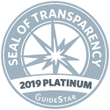
Clinical Thyroidology for the Public summarizes selected research studies discussed in the previous month’s issue of Clinical Thyroidology, an official publication of the American Thyroid Association. Editor-in-chief, Alan Farwell, MD, FACE
Volume 17 Issue 5
Available in pdf format for saving and printing and Web page format for viewing online
PDF Format for Saving and Printing
Clinical Thyroidology for the Public Volume 17 Issue 5 (PDF file, 2.27 MB)
TABLE OF CONTENTS – Web Format
HYPOTHYROIDISM
A randomized trial of combination T4 and T3 treatment and effect on tissue markers of thyroid status and quality of life in hypothyroid patients
While most hypothyroid patients feel fine on levothyroxine, some patients still experience hypothyroid symptoms, especially fatigue and a decrease in in thinking often referred to as “brain fog” function despite treatment restoring FT4 and TSH levels to the normal range. Because of this, some advocate for treatment with both LT4 and LT3 for patients with persistent symptoms on L-T4 alone. The authors in this trial aimed to show the effects of combination therapy with LT4+LT3 on tissue markers and quality of life in patients who underwent thyroid surgery.
Brigante G, et al. Randomized double-blind placebo-controlled trial on levothyroxine and liothyronine combination therapy in totally thyroidectomized subjects: the LEVOLIO study. Eur J Endocrinol 2024;190(1):12-22; doi: 10.1093/ ejendo/lvad172. PMID: 38124252.
GRAVES’ DISEASE
Targeting thyroid receptor antibodies to treat Graves’ hyperthyroidism and Graves eye disease
Graves’ disease is an autoimmune condition in which the body produces antibodies that bind to the TSH receptor on thyroid cells and turn it on (TRAb). Additionally, TRAbs can cause swelling of the muscles behind the eyes, a condition known as thyroid eye disease (TED), which can result in the eyes bulging out. This article summarizes the initial two studies investigating the use of Batoclimab, a new drub that decreases antibody levels, in treating both Graves’ hyperthyroidism and Graves’ eye disease.
Kahaly GJ, Dolman PJ, Wolf J, et al. Proof-of-concept and randomized, placebo-controlled trials of an FcRn inhibitor, batoclimab, for thyroid eye disease. J Clin Endocrinol Metab 2023;108(12):3122-3134
THYROID CANCER
Thyroid cancer and autoimmune thyroid disease.
Research has suggested that there may be an association between autoimmune thyroid disease and thyroid cancers. Some studies have shown perhaps an increased risk of thyroid cancer in people with autoimmune thyroid disease but potentially better overall outcomes. The aim of this study was to investigate the relationship between the presence of autoimmune thyroid disease and thyroid cancer patient outcomes at 1 year after treatment.
De Leo S, et al. A prospective multicenter study examining the relationship between thyroid cancer treatment outcomes and the presence of autoimmune thyroiditis. Thyroid. 2023;33(11):1318-1326; doi: 10.1089/thy.2023.0052. PMID: 37725571
THYROID CANCER
Underlying thyroid disease and blood flow can predict progression of small thyroid cancer during active surveillance.
The decision to follow small cancers with ultrasound monitoring and hold off on surgery until the cancer starts to grow is called active surveillance and is currently accepted as an alternative to surgery for patients with these small thyroid cancers. This study was performed to determine characteristics noted on ultrasound that may predict progression of small thyroid cancers that would lead to surgery.
Lee JY et al. US predictors of papillary thyroid microcarcinoma progression at active surveillance. Radiology 2023;309(1):e230006; doi: 10.1148/radiol.230006. PMID: 37906009.
THYROID CANCER
Is removal of thyroid tissue through incisions made in the mouth safe and effective for treating thyroid cancer?
A small fraction of people who have thyroid surgery will find the scar left in their neck unacceptable and, as a result, will experience a long-term decrease in their overall happiness/quality of life. For this reason, techniques to remove thyroid tissue without leaving a visible scar have been developed. The newest method for this is removal of the thyroid through the mouth (transoral thyroid surgery). The authors of the research described here sought to study the effectiveness of transoral thyroid surgery in treating the most common kinds of thyroid cancer.
Chen YH et al. Transoral endoscopic and robotic thyroidectomy for thyroid cancer: the mid-term oncological outcome. Surg Endosc 2023;37(10):7829-7838. doi: 10.1007/s00464- 023-10339-9. PMID: 37605012.
THYROID CANCER
Can radiofrequency ablation be used for treatment of papillary thyroid cancer?
Radiofrequency ablation (RFA) has shown promise as an alternative to surgery for treatment of low-risk papillary thyroid cancer in several studies. However, it is still not clear how to define treatment success and how to select an appropriate papillary thyroid cancer for RFA. This study evaluated long-term findings after RFA treatment of low-risk papillary thyroid cancer.
Li X et al. Sonographic evolution and pathologic findings of papillary thyroid cancer after radiofrequency ablation: a five-year retrospective cohort study. Thyroid. Epub 2023 Nov 20; doi: 10.1089/thy.2023.0415. PMID: 37885207.



